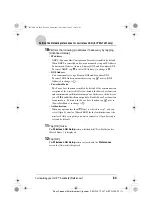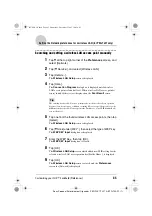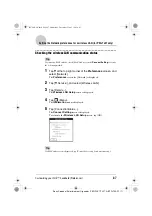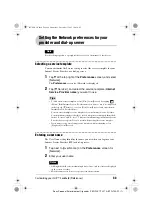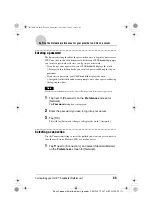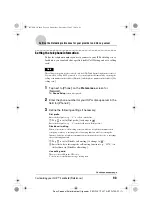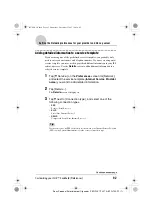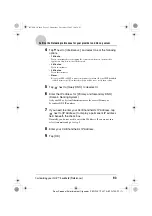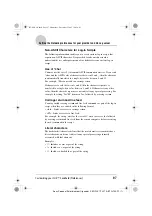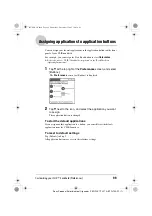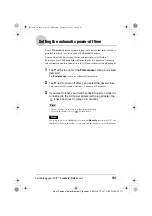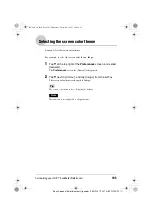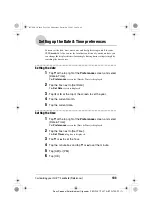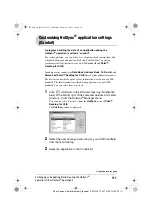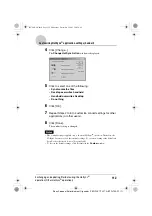
Customizing your CLIÉ™ handheld (Preferences)
97
Sony Personal Entertainment Organizer PEG-TJ37/TJ27 A-BTG-100-11 (1)
Setting the Network preferences for your provider and dial-up server
Non-ASCII Characters for Log-in Scripts
The following information enables you to create custom log-in scripts that
require non-ASCII characters. It is provided for advanced users who
understand the use and requirements of such characters in a custom log-in
script.
Use of ^char
You may use the caret (^) to transmit ASCII command characters. If you send
^char, and the ASCII value of character is between @ and _, then the character
is automatically translated to a single-byte value between 0 and 31.
For example, ^M is converted to a carriage return.
If character is a value between A and Z, then the character sequence is
translated to a single-byte value between 1 and 26. If character is any other
value, then the character sequence is not subject to any special processing. For
example, the string “Joe^M” transmits Joe, followed by a carriage return.
Carriage return and line feed
You may include carriage return and line feed commands as part of the log-in
script, when they are entered in the following format.
• <
cr
> : Sends or receives a carriage return
• <
lf
> : Sends or receives a line feed
For example, the string “wait for Joe<cr><lf>” waits to receive Joe followed
by a carriage return and line feed from the remote computer, before executing
the next command in the script.
Literal characters
The backslash (\) character defines that the next character is transmitted as a
literal character, and is not subject to any special processing ordinarily
associated with that character.
Examples:
• \^ : Includes a caret as part of the string
• \< : Includes a < as part of the string
• \ \ : Includes a backslash as part of the string
01US01COV.book Page 97 Wednesday, December 3, 2003 10:02 AM


